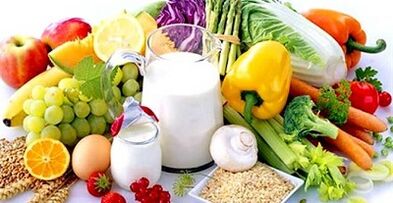
For centuries, gout has been known as the “nobles’ disease.”This disease mainly affects upper-class people who are not used to restrained eating.It is now reliably known that this disease has nothing to do with social status, but metabolism plays an important role here.
Improper metabolism and elevated uric acid levels in the blood can lead to the development of recurrent acute arthritis.No drug can completely eliminate the disease, but achieving significant relief for patients by minimizing exacerbations is a very real task.
Modern drugs help eliminate excess uric acid and reduce its critical levels, but the main condition for the treatment of this complex disease remains adherence to a special diet.Through nutrition, patients can achieve maximum results.
Nutrition for gout
Uric acid is the main enemy of gout patients and is formed from purines.The latter is found in large amounts in animal foods, especially fatty fish and pork.Therefore, meat and fish were almost completely prohibited.
Some plant foods contain purine substances.In order to minimize the possibility of recurrence, it is necessary to strictly monitor the patient's diet.
- The main condition is that meals should be regular - 3-5 times a day.This will ensure that the required levels of purine substances in the blood are maintained and their excess is avoided;
- You can't eat too much.The amount of food consumed is strictly regulated;
- The opposite process—starvation—should not be allowed;
- If the patient is overweight, every effort must be made to shed the weight.But you need to lose weight gradually with the help of a balanced diet.Losing weight too quickly will only worsen a patient's condition.Optimal weight loss – 1-2 kg per month;
- It is important to drink as much fluids as possible during gout treatment.When the condition is stable, the standard is 1.5-2 liters of water per day. When the condition worsens, you should drink at least 3 liters of water.Water may be replaced by any other permitted liquid;
- An important part of the daily diet is alkaline mineral water.It helps remove urates from the body, which is important.
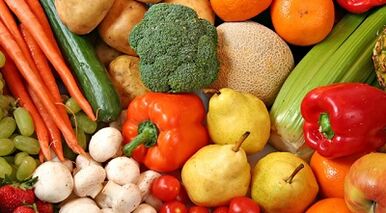
Gout requires strict food choices; patients must know what is allowed and what is strictly forbidden.Only ingredients that contain no purines or contain small amounts of purines are allowed in the diet, which does not affect the overall levels of this substance in the body.
For the most part, these are fruits and vegetables, so following this diet won't be difficult for potential vegetarians, but it will be much more difficult for carnivores.But as a result, patients will experience less pain and less swelling.
What can't you eat if you have gout?
It's worth being prepared that the list is not small.After all, many foods contain purines, which are undesirable to organisms affected by gout.
We're going to have to accept the fact that we're going to have to give up white bread altogether - it contains too much yeast.The latter actively promotes the production of uric acid in the body.We are discontinuing all baked goods for the same reason.
What meat products should not be eaten?Completely say no to sausages, salami, and canned meats—they are actually rich in purines.For the same reason we reject offal; fatty pork is also an absolute no-no.
We also eliminate seafood from the diet of gout patients.Fatty fish, canned foods and caviar are particularly prohibited.
You shouldn't eat spicy and salty cheese; this dairy product can cause more harm than pleasure from consuming it.
We remove all legumes from grains - lentils, fava beans, soybeans, broad beans.The reason is the same - high purine content.
Among vegetables, only mushrooms and sorrel are strictly prohibited.Until a while ago, tomatoes were also on this list, simply because they contain purines.But their content is so insignificant and the vitamin complex is so important that today this vegetable has been moved from the prohibited list to the opposite list.
The prohibited list of fruits and berries is also less extensive.It only includes figs, raspberries and grapes.
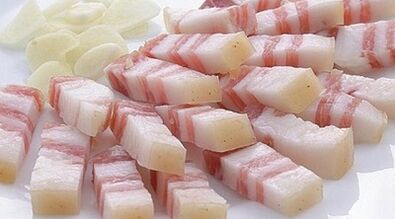
Sweet tooth lovers must avoid cakes and pastries with too much cream.
As for fats, you shouldn't try margarine and lard.
For gout, it is recommended to drink plenty of water, but not everything.Beverage selection should be equally careful.Therefore, coffee and strong black tea are prohibited.
It’s not even because of the presence of purines in them – they are present in very low amounts.But the diuretic effect of these drinks is an undesirable phenomenon.All alcoholic beverages, including beer and wine, are strictly prohibited.
Gout doesn’t like spicy food, so we completely eliminate spicy condiments like chili pepper, mustard, horseradish, etc. from our dishes.You shouldn't overuse salt.It's best to avoid it as much as possible.It is not acceptable to add bouillon cubes to dishes.The amount of preservatives and purines they contain is off the charts.
Fish, meat and legume broths should also be eliminated from the diet.Remove the mayonnaise.
All products on the above list are completely banned.They should not be used explicitly.First, it's a good idea to keep this list handy so you can always check the list of prohibited items.
It's possible, but be careful
The use of the above ingredients is completely prohibited.This list is not very long, the thing is that it includes very common dishes that are present in any healthy person's daily diet.Next, a list of products that are allowed for consumption will be presented.But there is a small compromise between these lists.Little by little he absorbed what was edible.
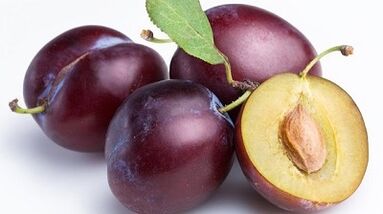
Among vegetables, topping the list are radishes, cauliflower, turnips, asparagus, celery, rhubarb, spinach, peppers, onions and parsley.All of these plants contain the same malevolent purines, gout’s nemesis.But its content is small.But they carry such high levels of vitamins that they mask any potential harm.
You can eat plums as fruit.As for drinks, restrictions on tomato juice have been lifted, but not more than one glass.Honey should be consumed with extreme caution.
What can you eat if you have gout?
When purine metabolism is disturbed, many things are strictly prohibited, but this does not mean that the patient is in a state of semi-starvation due to constant prohibition and rejection.Healing dishes can be delicious, moderate, but healthy at the same time.
Among baked goods, gray bread and rye bread should be preferred; among baked goods, non-leavened dough can be eaten.
Those who are not even ready to go vegetarian for the sake of their health can exhale, it is okay to eat meat, but only lean meat.This includes rabbit, turkey and chicken.But the portion size should be very moderate, not exceeding 170 grams, and you can eat a little more every other day, the rest will be harmful.
Fish and seafood must be included in the diet, but only low-fat varieties such as salmon, pink salmon and trout should be chosen.Among other sea creatures, shrimp, crustaceans and squid are best on a patient's plate.But under no circumstances can it be fried, only boiled.Patients should not consume boiled broth.
Milk and eggs are also important parts of the diet.Low-fat milk, kefir, yogurt, unleavened cheese, sour cream and cottage cheese are preferred.You can't cook with whole milk; you have to dilute it with water.Butter is allowed, but as an addition to hot dishes, not as a sandwich.Eggs are also advisable, but no more than 1 per day.
Quite a lot of vegetables are allowed.Melons, corn, beets, garlic, potatoes, carrots, cabbage, cucumbers, onions, tomatoes - all these products improve metabolic processes.Garlic has been shown to be excellent; it can calm inflammation and provide relief to patients.Vegetables are a major helper during fasting, and the potassium contained in many of them helps eliminate uric acid.
There is no need to remember anything, especially grains; for gout, all types of grains will do except legumes.This is a rich group of trace elements that promote regeneration processes, as well as fibers that allow you to effectively cleanse the body.There are no special rules about cereal, how much to eat, and when to eat it.There's just one condition - don't overdo it.
There are no big bans on berries and fruits either.All citrus fruits, hard green apples, dates, persimmons, strawberries, apricots, pears, dried fruits - except raisins, which are made from prohibited grapes.Naturally, you should use it within reason, but not overdo it.
Among sweets, you can eat marshmallows, marmalade, jam, marshmallows, and even candies, but not chocolate.You can have ice cream.We should not forget that everything is good in moderation.
You can introduce fats into the diet, but they can only be of vegetable origin; animal fats are completely excluded, they are too heavy.
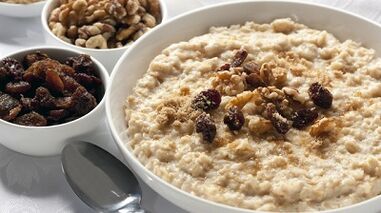
Allowed beverages include green tea and various fruit teas, but only permitted fruits and berries can be used; milk and lemon tea are allowed on the menu.Homemade preserves, juice drinks made from fresh berries and fruits, and fresh cucumber juice are helpful in treating gout.You should definitely get into the habit of drinking alkaline mineral water every day.
The only spices that can be added to the dish are vanillin, cinnamon, bay leaf, and citric acid.
All kinds of seeds and nuts can be eaten, the only exception is peanuts, which contain too many purines.
The patient's daily menu must include milk porridge, vegetable soup borscht, fresh vegetable salads and various vegetable dishes.Boiling is preferred; frying is almost never allowed.
gout diet
Compliance with certain nutritional rules is the basis of patient health.There is no way without it.There are certain structured rules for your daily diet that you must follow throughout your life, since gout is a chronic disease.In order for nutrition to be as effective as possible, it is best to entrust this problem to a competent doctor, who will take into account all the nuances of the disease and the characteristics of the patient's body - other existing diseases.
Daily diet must include liquid food, the basis of nutrition - vegetable soup, vegetable and fruit salad, preserves, mineral water.Eat at least 5 times a day.
You should drink at least two liters of water every day, which will help eliminate waste and toxins.There must be a fasting day when all meat and fish are completely removed.The maximum number of days allowed is 3 days.More than 3 days is impractical and unreasonable.

The basis of nutrition is a vegetarian table, with a minimum of meat and a maximum of vegetables and fruits.This diet is particularly useful for patients who are overweight.They should spend their fasting days more frequently than others.
You shouldn't let yourself lose weight too quickly.It is best to lose no more than 2 kilograms of weight per month.Losing weight too quickly can have a negative impact on your general condition and may lead to worsening of the disease.
Gout Diet 6
Table 6 was developed by a physician; the purpose of this diet is to normalize purine metabolism and reduce the content of purine processing products uric acid and salt.The energy value of this diet is 2700-2800 calories.The menu is a balanced table of protein content.
Strict adherence to an anti-purine diet will prevent the disease from getting worse and significantly reduce the likelihood of recurrence.This example is designed for a week, but you can keep going as you go.
The basic principles of the diet come down to a strict accounting of all proteins, fats, and carbohydrates.Therefore, daily protein intake should not exceed 70-90 grams.Animal proteins obtained from milk and its products are preferred.Fat levels equate to 80-90 grams per day.1/4 of this volume is of plant origin.The carbohydrate content should not exceed 350-400 grams per day.This volume is equivalent to 80 grams of sugar.
Diet No. 6 requires a daily salt intake of no more than 7-10 grams.Liquid consumption is 1.5-2 liters and the calories should not exceed 2400-2800.It is equally important to monitor trace mineral consumption.Therefore, potassium is at least 3.5 g, calcium - 0.75 g, thiamine - 1.5 g, retinol - 0.5, ascorbic acid - 150 mg.
Recipes from Menu 6
Dishes included in the diet of patients with gout are not as difficult to prepare as they may seem at first glance.Many of these are likely to be included in a healthy person's diet.
stew
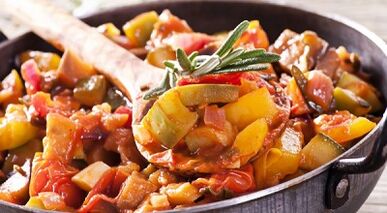
- Large potatoes – 3;
- medium carrot – 1;
- Onion – 1 head;
- Fresh green beans – 1 tablespoon;
- Butter – 1 tbsp.lake;
- Sour cream – 100 g;
- Add salt to taste.
Saute chopped onions in oil and add diced carrots.Stew well.Add the precooked potatoes, peas and sour cream to the pan-fried dish.With salt.Cook over medium heat for 1/4 hour.
cucumber salad
- Fresh cucumbers – 2;
- Sour cream for dressing;
- Add salt to taste.
Cut the cucumber into half rings and mix well in a cup with the sour cream.For added variety, you can add any other allowed vegetables - cabbage, tomatoes.
potato soup
- Potatoes – 3;
- 1/2 raw egg;
- Butter – 1 teaspoon;
- Flour – 1 tablespoon;
- fresh vegetables;
- Sour cream – 1 tbsp.
Make mashed potatoes from potatoes; it is best not to mash them but to pass them through a fine sieve.Add the sauce made from dry flour and 80 g.and potato soup.Be sure to bring the sauce to a boil.Then, add the eggs and butter to the potato mixture with sauce and bring to a boil again.
Silniki
- Cottage cheese – 250 g;
- Semolina – 4 tbsp.lake;
- Egg.
Mix all the ingredients and you will get a fairly thick paste.If that doesn't work, you can add more semolina.Leave for some time to allow the grains to disperse and expand slightly.When the dough has risen slightly, it's ready to bake.Form into neat pancakes and roll in flour.Fry both sides.Can be served warm with sugar or cream cheese.
hash browns
- Large potatoes – 3;
- Egg – 1;
- Flour – 20 g;
- sour cream;
- Vegetable oil – tsp.
Grate the peeled potatoes on the finest grater, add flour and eggs to the resulting mixture, mix well.Scoop the dough onto the heated skillet and cook for 5 minutes on each side.Serve with sour cream.
Tofu Casserole
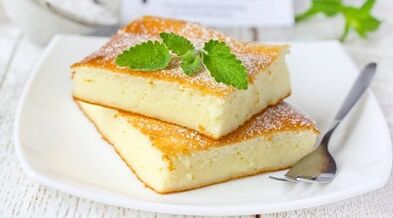
- Milk – 50 ml;
- Cottage cheese – 75 g;
- Egg whites – 2;
- sour cream;
- butter;
- sugar.
Mix the ingredients (except sour cream) well, put the resulting mass into molds and put in the oven, heated to 150 degrees.Bake until top is lightly browned.Before serving, sprinkle with sour cream.
Vegetarian Borscht
- Water – 3 liters;
- Potatoes – 2;
- Vegetable oil – 2 tablespoons;
- Onion – 1;
- Carrots – 100 g;
- Beetroot – 150 g;
- Cabbage – 100 g;
- Tomato paste – 1 tsp.
Add a spoonful of salt to the boiling water and add the diced potatoes.After boiling for 10 minutes, add chopped cabbage to the pot.At this time, fry the onions in the oil pan; when it boils slightly, add the grated carrots one by one, then add the beets.
Let the vegetables cook and add the pasta.A cup of tomato juice can be substituted.When the vegetables are ready, transfer them to the pot.You can add herbs, a little pepper and garlic.You can add sour cream to the finished dish.
Sample menu of Diet No. 6
This is one of the weekly dietary choices for gout sufferers.
first day
- Breakfast - milk porridge with dried fruits (but not raisins), milk tea
- Second breakfast - cheese pudding.
- Lunch - buckwheat soup, vegetable (zucchini) pancakes seasoned with sour cream, jelly.
- Afternoon snack - a glass of tomato juice.
- Dinner - fresh cabbage salad with apples.
the next day
- Breakfast - vegetable croquettes (carrots and rice), sour cream, lemon tea.
- Second breakfast - fresh pear juice.
- Lunch – fresh vegetable stew, pasta casserole with sour cream, green tea.
- Afternoon snack - baked apples with honey.
- Dinner – beet salad, unsalted cheese toast.
The third day
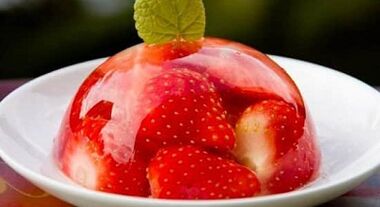
- Breakfast - cherry milk porridge, rosehip preserves.
- Second breakfast - sour cream and cheese.
- Lunch - cabbage soup, cheesecake, milk tea.
- Afternoon snack - strawberry jelly.
- Dinner – hash browns with sour cream.
The fourth day
- Breakfast - dill omelet, cheese sandwich, fresh fruit preserves.
- Second breakfast - carrot salad with grated apples, seasoned with sour cream.
- Lunch - beetroot soup, sour cream kefir pancakes, lemon tea.
- Afternoon snack - fresh apples.
- Dinner - rice porridge with pumpkin and cinnamon.
fifth day
- Breakfast - honey flavored cheese, field herb tea.
- Second breakfast - pears.
- Lunch - vegetable noodle soup, cereal schnitzel, preserves.
- Afternoon snack - apples.
- Dinner – eggplant with cheese and tomatoes.
The sixth day
- Breakfast - millet casserole with honey, tea with milk.
- Second breakfast - banana.
- Lunch - rice soup, cabbage, jelly.
- Afternoon snack - kefir with marshmallows.
- Dinner - roasted potatoes and vegetables.
seventh day
- Breakfast - two boiled eggs, cucumber salad.
- Second breakfast - toast with cheese.
- Lunch - milk millet porridge, cheese pancakes.
- Afternoon snack - fresh fruit.
- Dinner - Stewed cabbage, toast with peanut butter.
How to eat during an exacerbation of illness
Table 6 is very suitable for patients in remission, but in exacerbations the nutrition should be completely different.Only in this way will the situation truly change and the deterioration will recede.The basic rule of nutrition boils down to a complete rejection of meat and fish dishes - eat only fruits and vegetables.
What does the menu look like during an exacerbation?
Before breakfast - half a cup of warm alkaline mineral water, which can be replaced by rosehip soup.
- Breakfast - 120 grams of oatmeal with milk and a glass of milk.The premise is that the porridge must be liquid.
- Second breakfast – a glass of fresh apple juice or a raw apple.
- Lunch - vegetable puree soup - 120g, jelly.
- Afternoon snack - a glass of fresh carrot or tomato juice.
- Dinner - 120 grams of liquid milk rice porridge and a cup of apple preserves.
- Second dinner - a glass of kefir.
- You can drink tea with milk and honey before going to bed.
An important condition is careful control of portion sizes; they should be modest, about half the daily intake.After the attack subsides, dishes with meat and fish can be introduced, not only cooked but also fried.






















